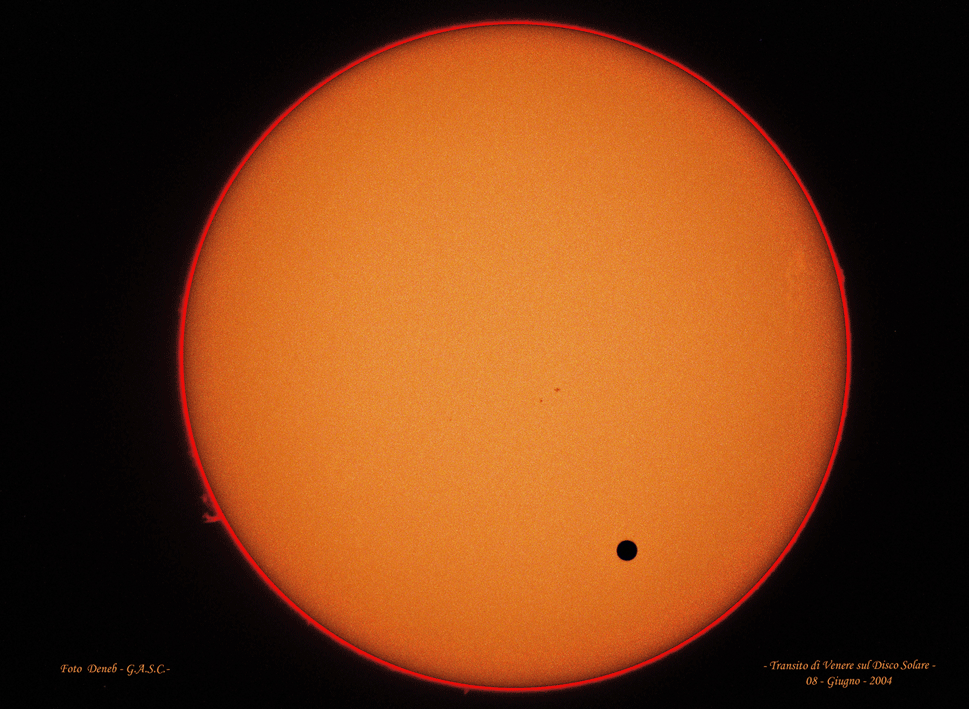
On June 8, 2004, Venus crossed the solar disc, in its first transit in faraway from 1882. The transits of this planet happens in pairs, from eight years of distance one from the other: the next to will be occur on 6 june 2012. In the past these transits had helped some scientist for understand the dimensions of Solar System.
How to observe Venus transit
We recommend choosing a place where the northeast horizon, from which the Sun will rise, is completely free from all obstacles, you should be at least two persons, to handle the stages of observation, even better if you are part of a group of enthusiasts. This is the last transit we shall see in our lifetime, the next one will occur in 2117, or otherwise, the next one will be visible from Mars on August 20, 2030.
We would like to remind you that the Sun will rise at 05:36, the third contact beginning at 06:37, which corresponds to the beginning of the end of the transit, the fourth contact at 06:55 that corresponds to the end of the transit. For accuracy purposes we would like to remind you that the first contact takes place at 0:09 and mid-transit is at 03:29.
To observe the transit you should equip your telescopes with a white light solar filter, Astrosolar, or Halfa, and for visual observation with the usual Astrosolar glasses. As the sun is very low on the horizon (about 10 degrees) do not waste time trying to make high resolution shots, impossible due to the certain presence of strong turbulence.
For a nice visual observation 10×30 binoculars with two Astrosolar filters are sufficient, and for some interesting photographic applications a small refractor with a diameter from 60 to 100 mm is sufficient.
 English
English  Italiano
Italiano 



